Embarking on the journey to train your bird can be an enriching experience, deepening the bond between you and your feathered companion.
Teaching your bird to fetch and engaging in other fun games not only provides mental stimulation but also contributes to their physical well-being.
Birds are intelligent creatures, quick to learn, and eager to participate in activities that challenge their minds.
In this guide, we will explore how to train your bird to fetch and other fun games and enjoyable games that cater to your bird’s instincts, fostering a playful and interactive relationship.
From positive reinforcement to varied toys and games, these techniques aim to make training a delightful experience for both you and your feathered friend.
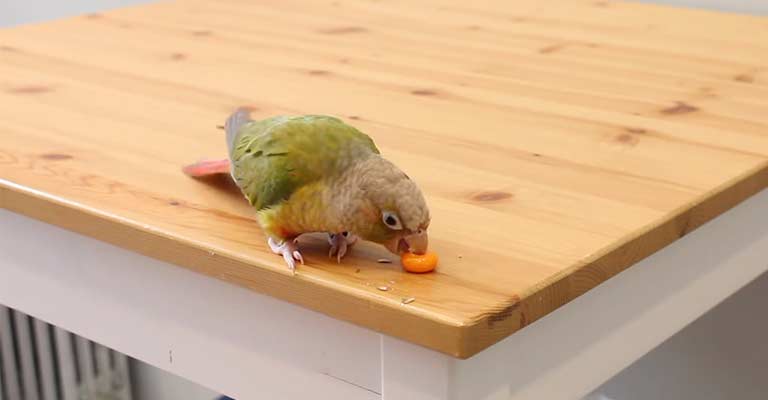
How To Train Your Bird To Fetch And Other Fun Games?
Training your bird to play fetch and engaging in other fun games can be a rewarding experience for both you and your feathered friend. Here are seven ways to train your bird to fetch and enjoy other entertaining activities:
Positive Reinforcement
Begin by establishing a positive association with the game. Offer your bird small treats or praises whenever it interacts with the fetching object. This creates a link between the activity and a rewarding experience, making your bird more motivated to participate.
Choose the Right Toy
Select a lightweight and bird-safe toy that is easy for your bird to carry in its beak. Choose an item with vibrant colors and textures to capture your bird’s attention.
Gradually introduce the toy to your bird, allowing it to become familiar with the object before starting the fetch training.
Short Sessions and Patience
Keep training sessions short and enjoyable to prevent your bird from becoming bored or stressed. Patience is key when training any animal, so be prepared to repeat the steps multiple times.
Celebrate small victories and progress to longer sessions as your bird becomes more comfortable with the game.
Target Training
Incorporate target training into your fetch routine. Teach your bird to touch a designated target (such as a stick or your finger) with its beak.
Once your bird understands this concept, use the target to guide it towards the fetching object. This adds an extra layer of control and understanding to the game.
Play in a Safe Environment
Ensure that the training environment is safe and free from potential hazards. Birds are sensitive to their surroundings, so a calm and secure space will encourage them to engage in playful activities.
Remove any dangerous items and create a comfortable atmosphere for your bird to enjoy the games.
Variety in Games
Keep things interesting by introducing a variety of games and activities. Birds enjoy mental stimulation, so they alternate between fetch, puzzle-solving, and other interactive games.
This not only prevents boredom but also strengthens the bond between you and your bird.
Socialize and Bond
Use playtime as an opportunity to strengthen your bond with your bird. Interact with it during the games, talk to it, and offer gentle touches.
The positive social interaction will enhance the overall training experience, making your bird more eager to participate in fetch and other activities.
What Kind Of Games Do Birds Like To Play?
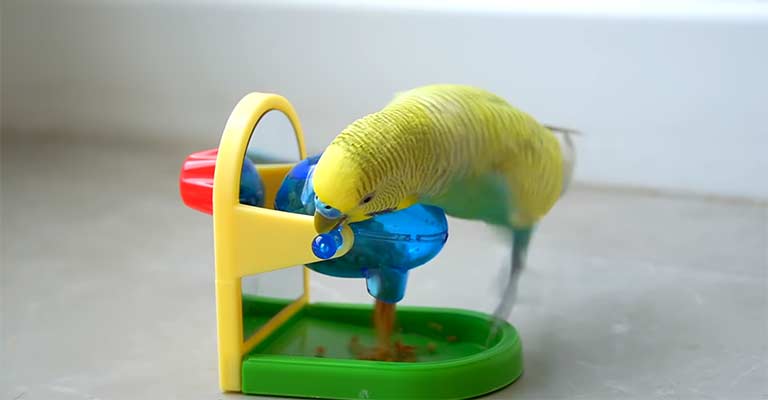
Birds are not only intelligent but also playful creatures that thrive on mental and physical stimulation. Engaging in games with your feathered friend can strengthen your bond and provide enrichment.
Here are seven types of games that birds often enjoy:
Puzzle Toys and Foraging Games
Birds are natural foragers, and puzzle toys cater to this instinct. Provide toys that dispense treats when manipulated, encouraging your bird to figure out how to access the rewards.
This not only keeps them entertained but also stimulates their problem-solving abilities.
Hide and Seek
Create a game of hide and seek by temporarily hiding your bird’s favorite treats or toys in various locations within their play area. This engages their curiosity and encourages exploration as they search for hidden treasures, making the activity both mentally and physically stimulating.
Target Training
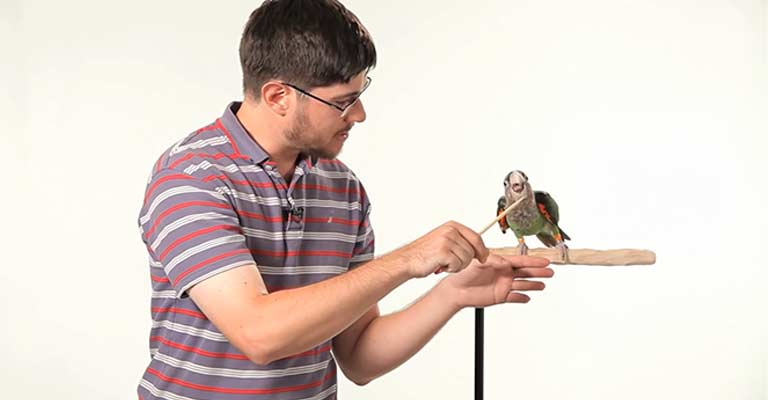
Target training involves teaching your bird to touch a designated object with its beak or foot. Use positive reinforcement, such as treats, to reward successful touches. This game not only provides mental stimulation but also strengthens the bond between you and your bird as you work together.
Obstacle Course
Set up a miniature obstacle course using bird-safe materials like perches, ropes, and toys. Encourage your bird to navigate through the course, promoting physical exercise and coordination. Adjust the difficulty level as your bird becomes more adept at the challenge.
Mirror Play
Birds are often fascinated by their reflections, making mirrors a popular source of entertainment. Introduce a small bird-safe mirror to your bird’s environment and observe as they interact with their own reflection. This simple game can provide hours of amusement and social stimulation.
Training with Props
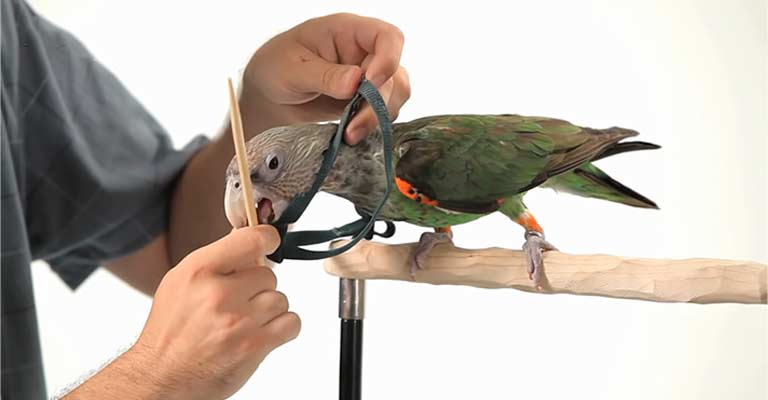
Teach your bird to interact with specific props, such as rings or small balls. Encourage them to pick up, roll, or toss the objects using positive reinforcement. This not only offers a playful activity but also showcases your bird’s dexterity and ability to learn new skills.
Musical Toys and Sounds
Birds are naturally drawn to music and sounds. Provide toys that produce musical notes or replicate bird sounds. This type of auditory stimulation can captivate their interest and add a sensory dimension to their playtime, creating a lively and engaging atmosphere.
How Can I Make My Bird More Playful? ]
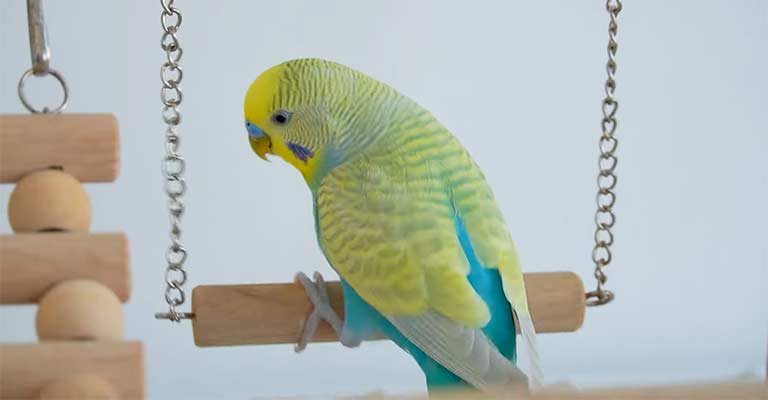
Encouraging playfulness in your bird is a wonderful way to enhance its well-being and strengthen your bond. Birds are naturally curious and intelligent, so providing a stimulating environment is key to promoting playful behavior.
Here are some ways to make your bird more playful:
Varied Toys and Enrichment
Introduce a diverse range of toys that cater to your bird’s instincts. Include toys with different textures, colors, and shapes to engage their senses. Rotating toys regularly helps prevent boredom, keeping your bird interested and eager to explore its surroundings.
Interactive Games
Engage in interactive play sessions with your bird. Use toys that allow you to participate, such as puzzle feeders, or engage in games like peek-a-boo. The shared experience strengthens the bond between you and your bird while promoting mental stimulation and physical activity.
Create a Playful Environment
Designate a play area where your bird can explore safely. Place perches, ladders, and swings to encourage movement and climbing. Incorporate toys that stimulate natural behaviors, such as shredding or foraging toys, to keep your bird entertained and mentally active.
Positive Reinforcement
Use positive reinforcement, such as treats or praise, when your bird displays playful behavior. Rewarding actions like exploring new toys or successfully completing a trick encourages your bird to associate play with positive experiences, reinforcing the desire for playful activities.
Rotate and Refresh Toys
Keep your bird’s environment dynamic by regularly rotating and refreshing toys. Introduce new items to pique their curiosity and maintain excitement. This prevents habituation, ensuring that your bird remains interested and actively explores its surroundings.
Training and Tricks
Teach your bird simple tricks or commands using positive reinforcement. Training sessions not only provide mental stimulation but also create a playful interaction between you and your bird. Start with basic commands like targeting or waving, gradually progressing to more advanced tricks.
Social Interaction
Birds are social creatures and interaction with their human companions is crucial for a playful demeanor.
Spend quality time talking, singing, or engaging in gentle physical contact with your bird. The social bond formed during these moments encourages a playful and trusting relationship.
Remember, each bird has its own personality and preferences, so observe and adapt these strategies to suit your feathered friend’s unique needs.
Consistent positive reinforcement, a stimulating environment, and regular interaction will contribute to a happy, playful, and well-adjusted bird.
FAQs
What are some suitable toys for training birds to fetch?
Opt for colorful and textured toys that are easy for your bird to carry. Choose items with various shapes to keep your bird engaged. Experiment with different materials to find what captivates your bird’s interest during fetch training.
Can any bird be trained to fetch?
Most birds, especially those known for their intelligence, can be trained to fetch. However, individual birds have unique personalities, so the training process may vary. Tailor your approach to suit your bird’s preferences, and be patient as they learn and adapt to the fetching game.
How do I maintain my bird’s interest in fetch training?
Keep sessions short and interesting to prevent boredom. Introduce variety by using different fetching objects or incorporating additional tricks into the training routine. Rotate toys regularly to maintain your bird’s curiosity and enthusiasm for the game.
What other fun games can I play with my bird?
Besides fetch, engage your bird with puzzle toys, target training, and obstacle courses. Incorporate interactive play, such as hide and seek or mirror play, to stimulate their mental and physical well-being. The key is to tailor activities to your bird’s preferences and gradually introduce new games over time.
How long does it take to train a bird to fetch?
The duration varies based on your bird’s personality and previous training experience. Some birds may catch on quickly, while others may require more time. Be consistent, celebrate small successes, and adjust your approach based on your bird’s progress.
The primary goal is to create a positive and enjoyable experience for both you and your feathered friend.
Conclusion
Training your bird to fetch and incorporating other fun games into your routine can significantly enhance the quality of life for your avian companion.
The journey involves patience, positive reinforcement, and an understanding of your bird’s unique personality.
As you witness your feathered friend eagerly participating in games and demonstrating newfound skills, the joy, and satisfaction derived from the training process become truly rewarding.
Beyond the practical benefits, the time invested in these activities strengthens the bond between you and your bird, creating a harmonious and playful companionship that lasts a lifetime.
May these training methods and games bring joy and fulfillment to both you and your beloved feathered companion.